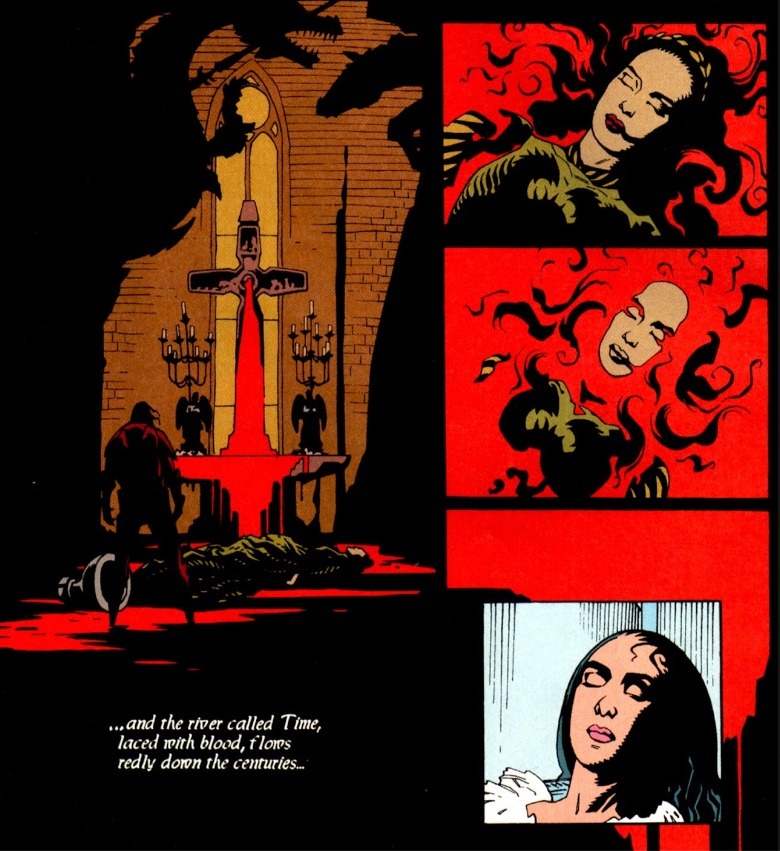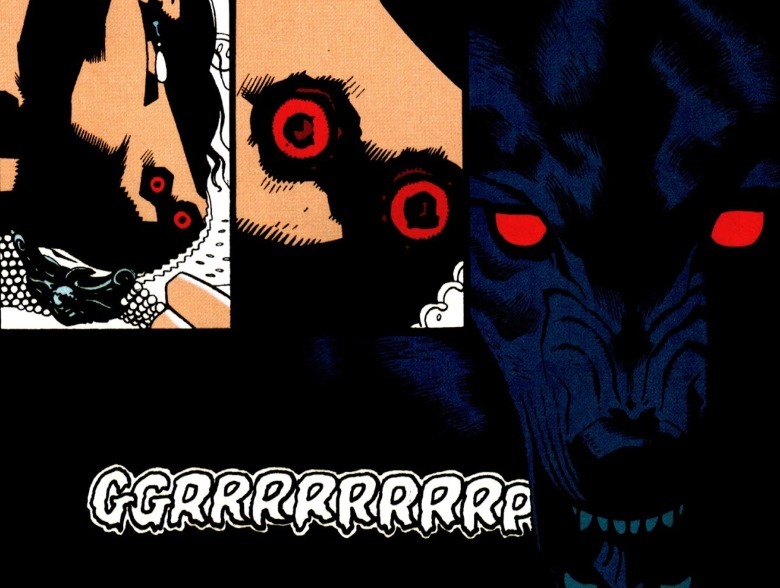Some “Dracula” comics reimagine the character in a new setting, others simply retell Stoker’s novel. See French artist Georges Bess’ black-and-white “Dracula” graphic novel, which was published in 2023 and is part of a spiritual trilogy formed by the comic retellings of “Frankenstein” and “The Hunchback of Notre Dame.”
Prolific comic writer Roy Thomas has adapted the original “Dracula” story not once, but twice. (Maybe Thomas will start lobbying for a co-creator credit on Dracula soon.)
Thomas first adapted Stoker in the 1970s as a serialization, published in the short-lived magazine “Dracula Lives!” Drawn by Dick Giordano, this “Dracula” was left unresolved for decades until 2004, when Marvel published it as the four-issue “Stoker’s Dracula.” In 2010, the series was rereleased in full-color.
During that limbo, Thomas also penned the 1992 comic adaptation of Francis Ford Coppola’s film, “Bram Stoker’s Dracula.” We at /Film are big fans of that movie, one of the most audacious visual splendors ever captured in celluloid. How could any comic match that majesty? Easily, just get Mike Mignola to draw it.
Thomas & Giordano’s “Dracula” is the best bet if you want only to experience the novel in a visual form. Giordano’s classical, Marvel-house style art resembles a pulp novel cover you might’ve seen affixed to a 1970s reprinting of “Dracula” — only the interior pages live up to that curiosity-piquing image. The comic is equally worth reading in color and the spookier black-and-white, too.
As for the Mignola edition, those four issues are a simple adaptation of the Coppola film; Mignola draws the characters resembling the film’s actors, recreates scenes wholesale, etc. What the comic lacks in surprises, it makes up for in craft. The heavy shadows mixed with the full-out color drenching (colorist Mark Chiarello uses heavy blues for night time scenes) replicate the visual language of Coppola’s film. Mignola adds comic-original flourishes too, particularly with transitions. See how, during Dracula’s transformation, his bride Elisabetta is consumed by a pool of blood — leading to a panel of the slumbering Mina centuries later, signifying the reincarnation. Or how a close-up of the red puncture wounds adjourning Lucy’s neck become Dracula’s red eyes.
Both editions of Thomas and Giordano’s “Dracula” are available to read on digital reading service Marvel Unlimited. The Mignola version is unfortunately out of print at the moment.




